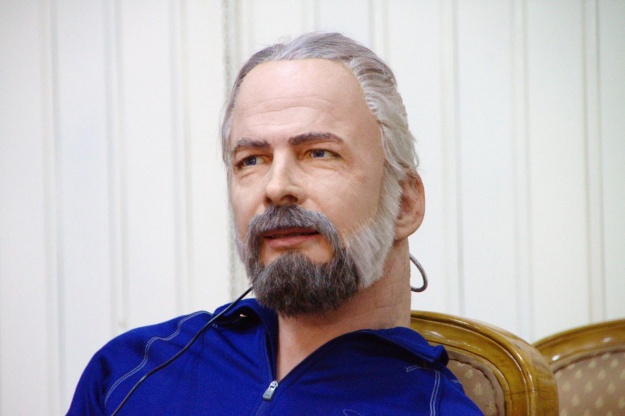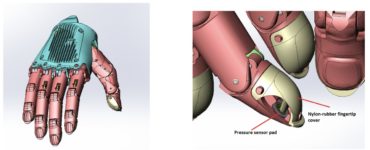Abstract
Although robotics researchers commonly contend that robots should not look too human-like, many art-forms have successfully depicted people and have come to be accepted as great and important works, with examples such as Rodin’s Thinker, Mary Cassat’s infants, and Disney’s Abe Lincoln simulacrum. Extending this tradition to intelligent robotics, the authors have depicted late sci-fi writer Philip K. Dick with an autonomous, intelligent android. In doing so, the authors aspire to bring robotic systems up to the level of great art, while using the technology as a mirror for examining human nature in social AI development and cognitive science experiments.
This myth that robots should not look or act very human-like is a pernicious one in robotics research, one commonly known by the term “Uncanny Valley”. Our research, however, furthers the tradition of human figurative depiction that reaches from classical Greek sculpture to “postmodern” contemporary art. By advancing this tradition into the field of robotics with intelligent and highly expressive depictions of humans, we gain a powerful mirror that can help address the question of “what is human.”
While people do indeed appear to be more sensitive to the realistic human social countenance (vs. cartoonish depictions), this sensitivity can serve as a highly refined metric to assist in exploring human social cognition, in the pursuit of better cognitive science. And, if our engineered realistic robots do satisfy human’s discriminating taste for verisimilitude, then we will have developed a powerful toolchest of principles for engineered non-realistic robots as well. In this paper we will discuss the results of our recent human subject experiments, which strongly contravene the “uncanny valley” theory that humanlike robots are innately unlikable.
Read the entire research paper here.
by David Hanson, Andrew Olney, Imar A. Perira and Marge Zielke
Published 2005





Recent Comments